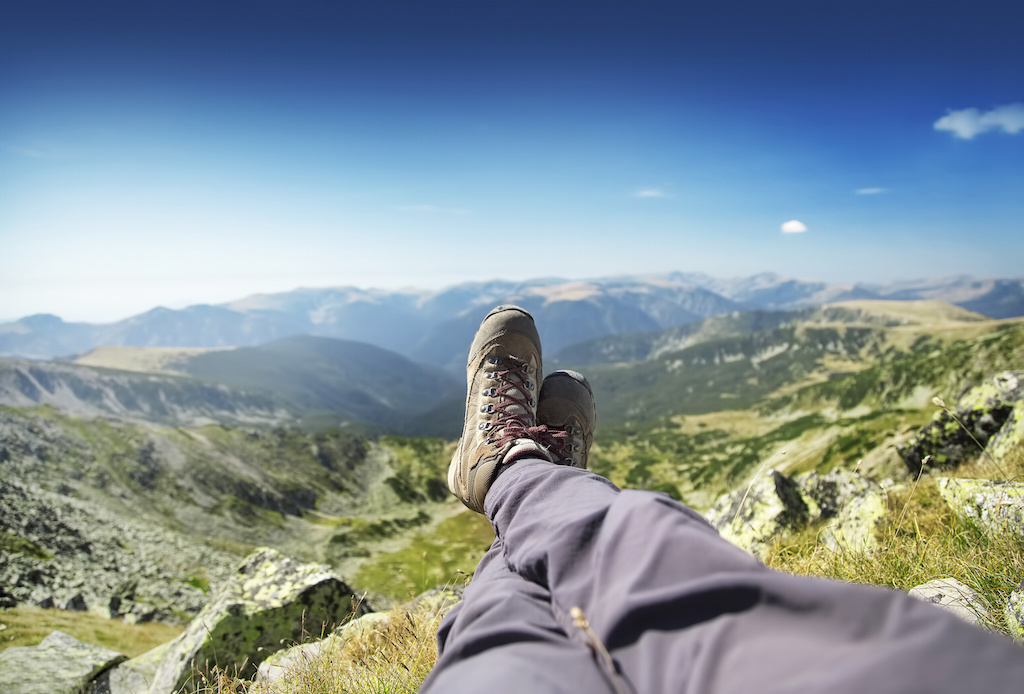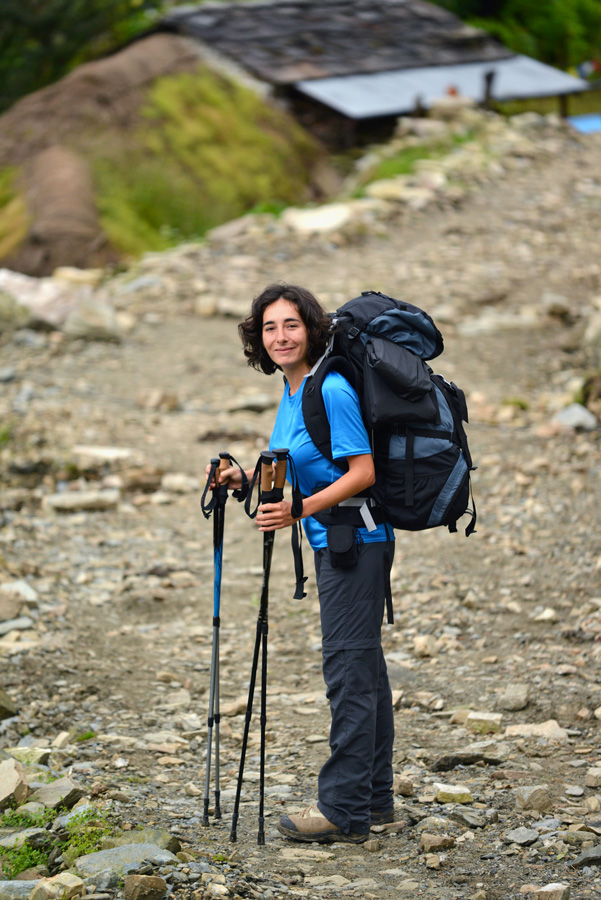What are Trekking/Walking Poles and why would I use them on an Inspired Adventure?
Contributed by Chris Mein (Paddy Pallin): Trekking poles are simply walking sticks and they take many forms, ranging from single staves made from found wood to pairs of sophisticated height-adjustable poles made from lightweight composite materials. This article is aimed at the user, or potential user, of purpose built walking poles, which have been enjoying increased popularity amongst trekkers, hikers and general walkers for many years.
What are the Benefits?
A landmark study done by Dr. G. Neureuther (Physician) in 1981 proved that use of “ski poles” while walking reduces the pressure strain on the opposite leg by approximately 20%. Furthermore, while walking on level ground, poles reduce the body weight carried by the legs by approximately 5 kg every step. Move to an incline, and that reduction increases to 8 kg. Think about this in the context of a multi hour or multi day walk/trek.
A more recent study with hikers was published in the American College of Sports Medicine journal, Medicine and Science in Sports and Exercise. The study conducted at the University of Massachusetts at Amherst in 2001, showed that using poles lets hikers lengthen their strides, put less strain on their knees, and generally feel more comfortable. The hikers studied did not expend less energy, but the increase in stability made long treks easier.
Effectively using two trekking poles reduces fatigue, increases speed (level, uphill and downhill), provides excellent stability, increases the distance that can be comfortably travelled in a day, and reduces accumulated stress on the feet, legs, knees and back.
How to Use Your Poles
One of the legitimate complaints about trekking poles is that many people simply do not know how to use them correctly. As a result these people get little or no benefit from them and the poles can easily end up getting in the way. Fortunately the proper technique is easy to pick up and can be mastered with a little practice.
Pole Length:
Even though it is often stated that you can adjust the pole to suit the terrain, you will find that generally they can be set at the beginning of a journey and left for the duration.
Completing the following procedure should result in a pole length that is a good compromise for both ascending and descending.
Adjust the length of your poles as follows:
- “Unlock” the upper and lower sections of both poles.
- Extend the lower section of both poles to just less than the maximum limit and “lock” the lower section.
- Stand up straight with shoulders relaxed.
- Place one pole under an arm and adjust the length so that the top of the pole is half way between you armpit and elbow.
- “Lock” the upper section of that pole in place.
- Use the fully locked pole as a “ruler” to adjust the length of your second pole.
Note: Adjustments to pole length should be made within the limits of the manufacturer’s recommendations and it might also help you in choosing which model, as it is imperative to get one that is long enough for you.
Wrist Straps:
The wrist straps are critical to getting maximum efficiency from your poles. They should be adjusted so that when the hand is inserted through the loop, the wrist can comfortably apply pressure to the pole. If you turn the loop over your hand like a ski pole grip it should not be necessary to grip the pole tightly with your hand in order to apply the pressure. Your thumb and fingers should merely form a “U” or an “O” around the grip. The area between the thumb and index finger becomes a point of articulation. While walking, the poles should act and feel as though the arms extend to the ground creating a second pair of legs. The poles should swing forward for the next step just as though they were legs. The grips can be used as necessary, but for the most part the poles should be loaded using mostly the wrist straps.
Terrain:
Level ground to slight uphill: Poles are used the same as in cross-country skiing. Tips of the poles are behind the body. Left foot is forward while left pole is back and similarly with the right. Forcefully load the poles to aid in forward movement.
On steep uphills: Left pole is planted at the same time as the left foot and similarly with the right. Load the pole to reduce the weight that the leg has to lift. Poles are even with the body for moderate upgrades and can be moved in front of the body for steeper inclines. Best to shorten the length of the poles so your hands are not at or over the height of your shoulders.
Slight to moderate downhills: Descending moderate declines you can use the exact opposite of level to slight uphill technique. The poles are in front of the body. Left foot is back while left pole is forward and similarly with the right. Load the poles to control forward movement.
Steep downhills: For these the configuration is nearly the opposite of when climbing steep terrain. Left pole is planted just before the left foot and then the right. Load the pole to help control placement of the foot. On slippery surfaces lean forward (the natural tendency is backward) and trust your poles. The poles will help maintain downward force on the feet to prevent them from slipping. On extremely steep slopes or rock steps you might place both poles in front and lower your weight down. Best to extend the poles so you’re not lowering your hands too far that you reduce your weight control.
NB: Practice the various techniques carefully to make sure that you are comfortable and safe using them and that you can learn the limits of the poles on different surfaces.
One Pole or Two?
All the above comments are about using a pair of poles. One pole will do some of the above but not all. One is better than none but two will provide more than twice the benefit. If you have knee or back problems, intend to use the poles all the time or are carrying a load, I would recommend two poles. You could always try one and add a second later.
The last word
We’re not suggesting that expeditions, like Mount Kilimanjaro, cannot be done without them, but we strongly recommend that you consider the idea as part of your preparation.
 International Women’s Day (IWD) is an opportunity for both women and men to reflect on progress made in the fight for gender equality, to continue to call for change and to celebrate the acts of women who have campaigned for equal rights.
International Women’s Day (IWD) is an opportunity for both women and men to reflect on progress made in the fight for gender equality, to continue to call for change and to celebrate the acts of women who have campaigned for equal rights.













